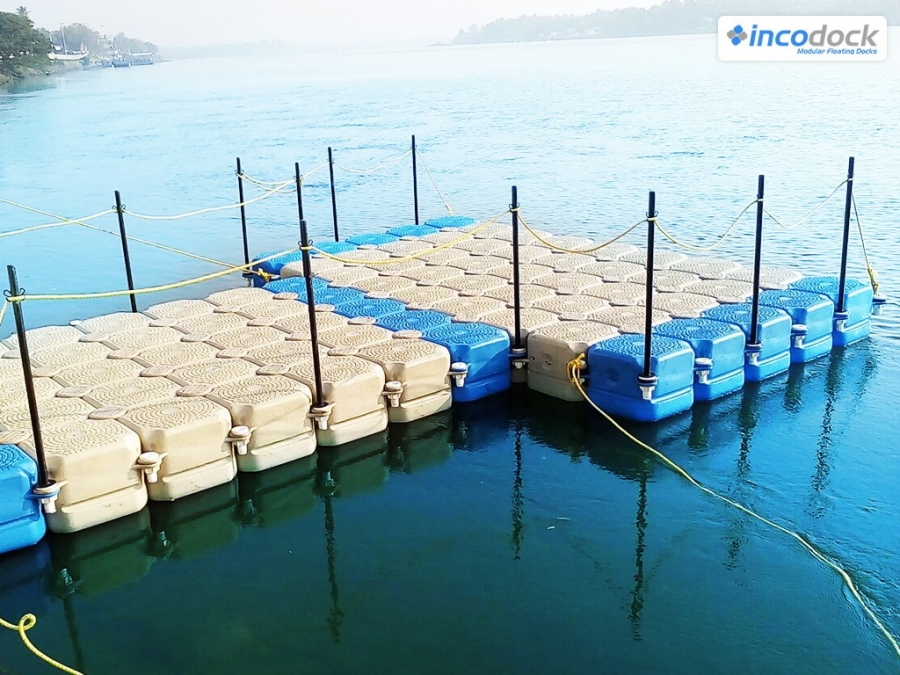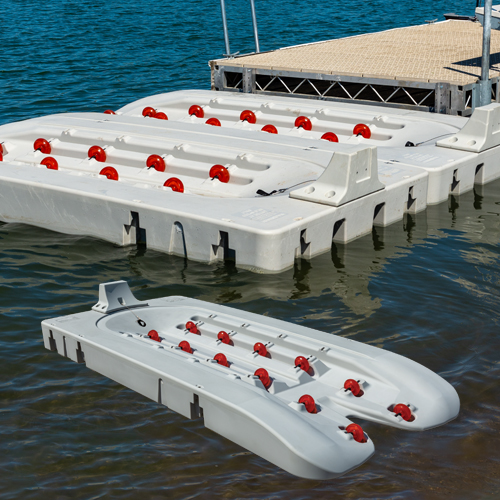Floating Docks: The Smart Selection for Modern Waterfront Living and Leisure
Floating Docks: The Smart Selection for Modern Waterfront Living and Leisure
Blog Article
Create the Perfect Docking Remedy With Floating Docks
Floating docks present a versatile service for a selection of maritime requirements, adjusting flawlessly to changing water levels and varied vessel kinds. As we discover the necessary elements that add to the efficiency of floating docks, several essential variables pertaining to stability and upkeep will emerge, increasing inquiries about exactly how to enhance your docking experience.

Benefits of Floating Docks
Floating docks deal numerous benefits that make them an ideal choice for numerous maritime applications. Unlike fixed docks, floating docks rise and loss with the tide, making sure constant availability for vessels.
In addition, floating docks are normally easier and quicker to install compared to standard set frameworks. Their modular layout permits straightforward assembly and disassembly, assisting in upkeep and relocation when essential. This versatility is particularly beneficial for short-lived applications or in environments where problems may transform.
Floating docks additionally have a tendency to be extra eco pleasant, as they reduce interruption to the seabed and surrounding aquatic ecosystems. Their resilient nature reduces the danger of damages to aquatic life, advertising a healthier environment. Additionally, these docks can be personalized to accommodate different vessel sizes, ensuring that they fulfill certain functional demands - floating dock builder.
Eventually, the mix of adaptability, ease of setup, and environmental factors to consider makes floating docks a highly efficient option for a wide variety of maritime requirements.
Selecting the Right Products
Choosing the proper products for floating docks is crucial to ensure longevity, longevity, and security. The option of materials straight impacts the dock's efficiency in numerous environmental problems, including exposure to water, sunlight, and prospective wear from marine web traffic.
Typical products utilized for floating docks consist of aluminum, wood, and high-density polyethylene (HDPE) Light weight aluminum is light-weight, corrosion-resistant, and needs marginal maintenance, making it an exceptional option for long life. Its initial price can be greater contrasted to various other products.
Timber, while visually attractive and supplying a traditional look, can be prone to rot and insect damages if not appropriately treated. Utilizing pressure-treated timber or normally sturdy varieties like cedar or redwood can alleviate these concerns.
HDPE is a popular selection because of its resistance to UV rays and chemicals, together with being eco-friendly. floating dock services. It is available and light-weight in different shades, enabling personalization
Inevitably, the ideal material selection will depend on details needs, consisting of budget, desired appearances, and ecological considerations. Mindful evaluation of these aspects will result in a resistant and effective floating dock service.
Style Considerations for Security
When creating floating docks, making sure stability is a basic element that can significantly impact their functionality and security. Security in floating dock style is affected by various aspects, consisting of buoyancy, weight circulation, and the setup of parts. An ideal buoyancy system need to use products that offer enough lift while minimizing weight. This balance makes certain that the dock remains above water, also under varying loads.
Weight distribution is crucial; equally dispersing loads throughout the dock prevents turning and improves security. Broader layouts can supply raised stability, specifically in harsh water conditions, while longer docks may call for extra supports to stop sagging.
An additional key factor to consider is the environmental influence, including wave action and wind. Incorporating functions such as sidewalls or skirting can help minimize the effects of environmental pressures, keeping security in unfavorable conditions. Inevitably, a combination of thoughtful layout, product option, and understanding of ecological factors will produce a floating dock that fulfills both security and safety demands.
Installation Tips and Strategies

Following, protect the needed permits and abide by neighborhood regulations, which may determine installation techniques and environmental considerations. Engage a qualified contractor experienced in floating dock installments if required. Usage top quality materials designed for marine environments to improve toughness and long life.
When placing the dock, align it parallel to the coastline to assist in simple access. Ensure that the anchoring system is durable, utilizing concrete blocks or helical anchors to support the dock versus wind and wave action. It's crucial to account for seasonal water degree changes, consisting of potential ice movement in cooler climates.
During find out this here the setup, ascertain the dock's floatation and stability prior to wrapping up the anchoring. Consistently inspect the installment for any kind of signs of wear or damages. By following these pointers and strategies, you see post can accomplish a secure, functional, and visually pleasing floating dock installment that satisfies your requirements.
Upkeep and Treatment Guidelines
Keeping and caring for floating docks is crucial to prolonging their life-span and making sure safe use. Regular assessments need to be conducted to recognize any type of signs of wear, damages, or aquatic growth. Try to find fractures, loose installations, or tarnished areas on the dock's surface, as these concerns can compromise structural stability.
Cleansing is necessary. Use a pressure washer to get rid of algae, barnacles, and particles, which can build up gradually. For persistent development, think about ecologically friendly cleansing agents that will not hurt marine life.
Furthermore, check the mooring lines and anchors regularly to guarantee they are secure and cost-free from deterioration. Change any torn or damaged lines immediately to keep security.
Throughout severe weather, such as storms or freezing problems, take precautionary actions. Safeguard floating dock builder the dock with extra mooring lines and, if viable, eliminate any removable parts to stop damages.
Final Thought
In conclusion, the implementation of floating docks presents a reliable and functional docking service appropriate for different maritime applications. With proper setup and routine maintenance, floating docks can offer trustworthy and effective docking experiences for a vast range of vessels.
As we check out the necessary elements that add to the effectiveness of floating docks, numerous key aspects pertaining to security and upkeep will certainly emerge, increasing concerns about how to maximize your docking experience. Unlike taken care of docks, floating docks increase and loss with the tide, making sure consistent accessibility for vessels.When designing floating docks, guaranteeing security is a basic aspect that can significantly affect their performance and security. Stability in floating dock design is affected by various aspects, consisting of buoyancy, weight distribution, and the setup of parts. Ultimately, a mix of thoughtful style, material choice, and understanding of environmental factors will yield a drifting dock that meets both stability and safety requirements.
Report this page